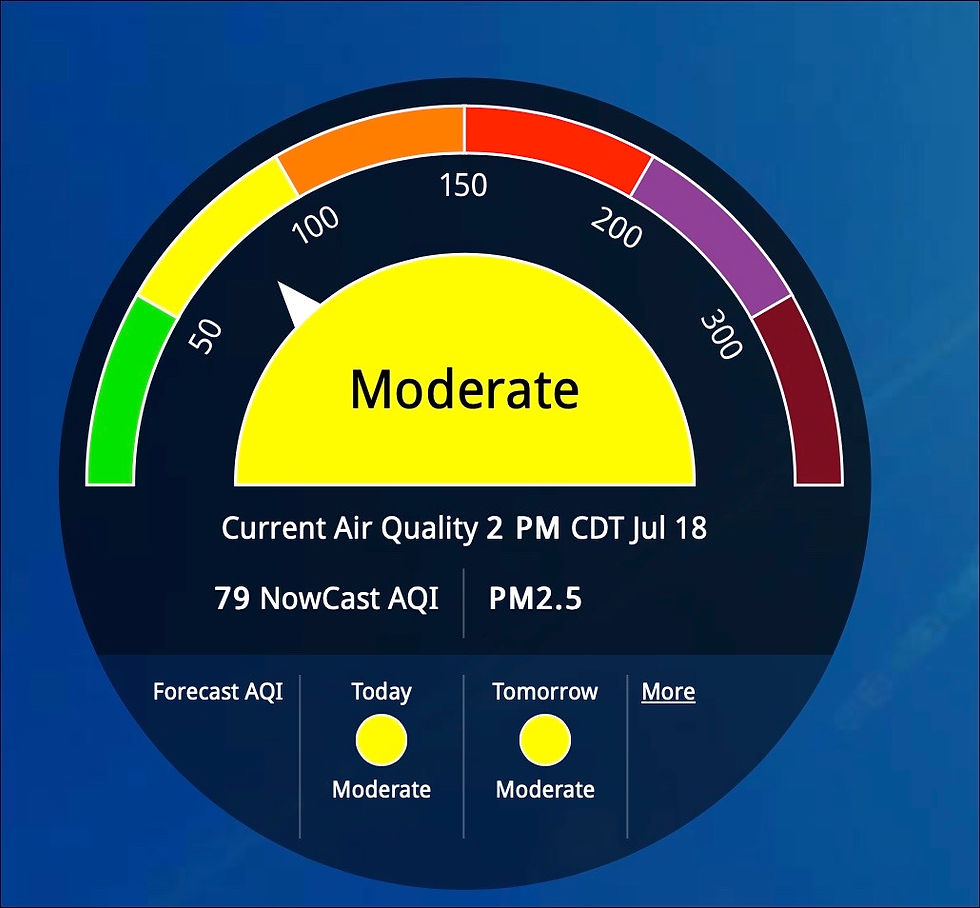
Summary: "In October 2023, the North Texas ozone alerts hit the highest number in a decade." The beginning of February 2024, the EPA set tougher national soot standards; Fort Worth's Tarrant County made the list of "10 Texas counties had particulate matter levels that would exceed the new standard." “There just aren’t many days anymore that aren’t ozone alerts.”
Latest Update: posted 09 February, 2024
Select #Tags for additional articles:#AreaGrowth
Update: Air Quality in Willow Park and Parker County from surrounding growth. Hint. It ain't getting better.
In October 2023, the North Texas ozone alerts hit the highest number in a decade. [*1] The beginning of February 2024, the EPA set tougher national soot standards; Fort Worth's Tarrant County made the list of "10 Texas counties had particulate matter levels that would exceed the new standard." [*2] “There just aren’t many days anymore that aren’t ozone alerts.” [*3]
• Willow Park Civics Blog > Air Quality in Willow Park and Parker County, posted 26 July 2023
Summary: No wonder Willow Park is developing the air quality of a larger city. In fact, Parker County has to continue emission testing when 90% of Texas counties no longer require a vehicle safety inspection. Surrounding development, I20, and local weather, make Willow Park and East PC "the perfect nesting ground for ozone formation.”
*1 North Texas ozone alerts hit highest number in a decade. Are millions in fines on the horizon? Fort Worth Report, 25 October 2023
If air quality doesn’t improve in North Texas over the next two years, Tarrant and Dallas counties will fail to meet the federal government’s new standards for harmful soot pollution.
The Environmental Protection Agency says its stricter limits on fine particulate matter, or soot, pollution will prevent up to 4,500 premature deaths and 290,000 lost workdays nationwide over the next eight years. The final rules were announced Feb. 7 but likely won’t go into effect until 2026.
• Dallas-Fort Worth counties don’t meet Biden administration’s new soot pollution limits, Fort Worth Report, 08 February, 2024
*2 The EPA sets tougher national soot standards. These 10 Texas counties already exceed them. The Texas Tribune, 07 February, 2024
The U.S. Environmental Protection Agency on Wednesday finalized a long-anticipated rule aimed at reducing the level of air pollution known as particulate matter — microscopic particles that can penetrate deep into the lungs and harm people’s health.
It’s the first change in the limits since 2012.
These particles, which are 30 times smaller than a single strand of hair, are emitted by sources like diesel engines, wildfires, dust from construction sites, and coal-fired power plants. Some scientists call particulate matter the deadliest form of air pollution because it can cause lung and throat irritation, respiratory inflammation, irregular heartbeat and aggravate asthma.
Industry groups and the U.S. Chamber of Commerce immediately criticized the new rule, saying it will be time-consuming and difficult for states to implement and arguing that wildfires and other non-industrial sources are major soot generators that have contributed to many of the region’s elevated levels.
According to EPA data, from 2020 to 2022, 10 Texas counties had particulate matter levels that would exceed the new standard, including four large urban counties: Dallas, Harris (which includes Houston), Tarrant (Fort Worth) and Travis (Austin). Four others are on the Texas-Mexico border: El Paso, Webb (Laredo), Hidalgo (McAllen) and Cameron (Harlingen and Brownsville).
Kleberg County (Kingsville) and Bowie County (Texarkana) are also on that list.
For residents in Texas and other states that will be required to comply with the new limits, it will not immediately mean cleaner air. Implementation is a slow, tedious process that will take years.
*3 North Texas could get up to $500M in federal funds to address air pollution. Here’s how, Fort Worth Report, 18 December 2023
Jarvis, MedStar’s medical director, said. “There just aren’t many days anymore that aren’t ozone alerts.”
Narvaez and the Texas Commission on Environmental Quality, the agency tasked with developing strategies to improve air quality, are still working to understand the reasons behind the uptick in ozone alert days. Extended periods of extreme heat certainly contribute to the problem, she said.
• Clean Air Resolutions, Air North Texas, January 2024
Additional Willow Park Civis Research
• EPA > AirNow.gov > Air Quality Index (AQI) > Fort Worth
• TCEQ
• Today's Texas Air Quality Forecast > Dallas-Fort Worth
Comments